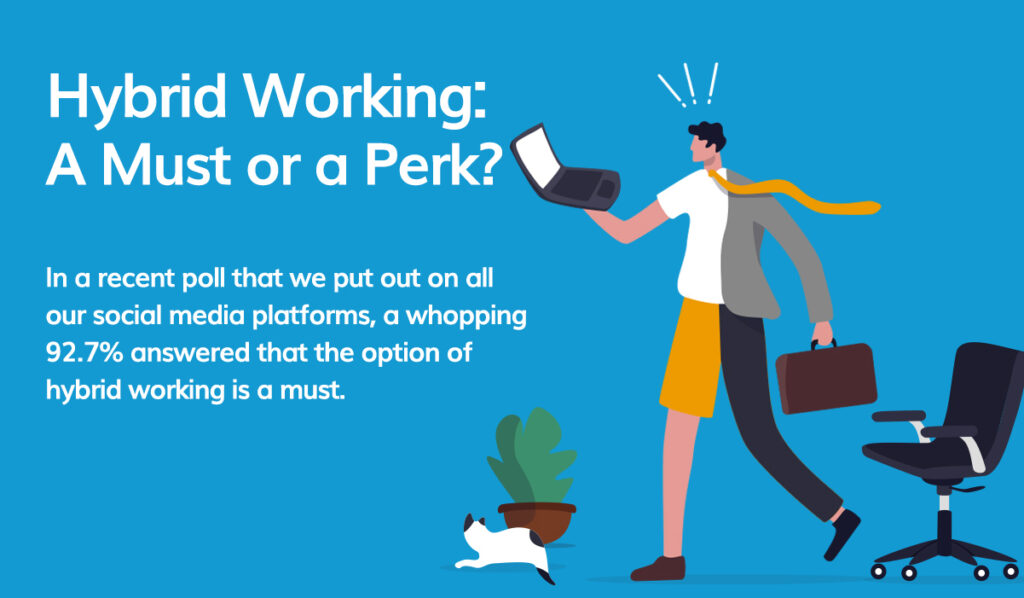In a recent poll which we put out on our social media platforms (Facebook, Instagram and Linkedin), a whopping 92.7% answered yes to “Is the option of hybrid working a must?”. This seems to be the general sentiment as in a survey commissioned by Breeze, 65% Americans said they would rather take a pay cut than return to the office.

The changes that 2020 brought along emphasised the need to find alternative modes of communication and showed us that working in the same confines in our 9-5 is not necessary in this day and age. With the use of technology, many so-called ‘desk jobs’ can be done at the office, as well as at home or even at a cafe’ or remote working spaces for hire.
Before we delve further into this… what is hybrid working?
It has many variations – depending on company policies and the nature of the jobs in question. Mostly it refers to a combination of working ‘on site’ (or at the office) and working from home. Some may work from home full time and occasionally work from the office, others may work full time from their office and occasionally work from home depending on necessity.
In this day and age it is no surprise that many employees view a hybrid working model as a must, rather than a perk. In a recent survey by Envoy.com and Wakefield, 47% said that they would likely look for another job if the company doesn’t offer a hybrid work model.
Let’s list some of the benefits of hybrid workers…
Employees can work when and where they feel the most productive
Some employees may be more productive in the early hours of the morning, others may prefer the afternoon. Some may prefer a bustling office ambiance to work, others may prefer to sit quietly at home and immerse themselves in what they have to do, away from the distractions of the office. It also depends on the nature of the work being done. If the job at hand requires constant communication, teamwork and brainstorming – working from the office will be more beneficial. If, on the other hand, it requires peace and quiet and a lot of concentration, perhaps it may be better to stay at home away from office walk-ins and distractions.
Avoiding the commute
Commuting to and from work can sometimes leave you frustrated and seriously depletes the quality of life, and by consequence the quality of work. Getting to avoid the commute a couple of days a week, frees up a few hours each day and avoids the frustration that traffic brings with it. You also realise that by 9am you would have already ticked off a few things off your list, sitting at home, rather than sitting in traffic without having had your morning coffee. It also shaves off the hours of commute on your way back home, which brings us to our next point.
Better work-life balance
Perhaps you need to drop-off your daughter at ballet on Thursday at 3pm, or take your elderly parent to a hospital visit in the middle of the day. Your children’s bedtime may be at 8pm, and getting home from work at 6pm doesn’t allow for much time with them. Hybrid work shaves off unnecessary time spent commuting and allows employees more flexibility leading to happier homes, healthier employees and better work-life balance.
Smaller offices
Companies may not need the big offices that were once necessary if a proper hybrid working strategy is in place. As not all workers may be at the office at once, it allows for more wiggle room and freeing up desk space. This is relevant especially now in 2021, when all (most) employees need is an internet connection and a laptop.
In summary, hybrid working today is indeed a must. As employees as well as employers have seen the benefits – it will be very difficult to go back to our old habits. Hybrid working aligns with employees priorities today and is now an important part of employee retention and satisfaction.
Do you agree with this? Let us know!

